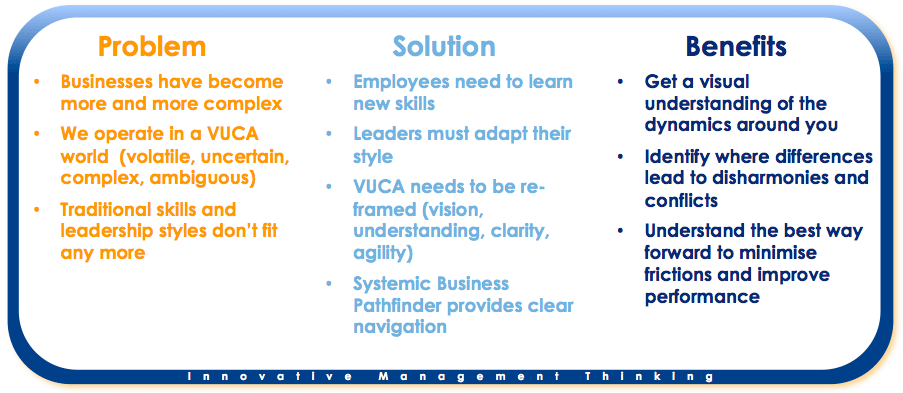Our Thinking
The environment has become volatile, uncertain, complex and ambiguous – VUCA.
Common usage of the military term VUCA began in the 1990s. It has subsequently been used in emerging ideas on strategic leadership and applies to a wide range of organisations. Elements of the VUCA paradigm have existed throughout history, but never to the extent evident in the early 21st century.
The deeper meaning of each element of VUCA serves to enhance the strategic significance of VUCA foresight and insight, as well as the behaviour of individuals and groups within organisations:
- Volatility: The nature, dynamics and speed of change has an impact on catalysts.
- Uncertainty: The lack of predictability, the prospect for surprise, and the sense of awareness and understanding of issues and events.
- Complexity: The multiplex of forces, the complicated nature of issues and the chaos and confusion that surround an organisation.
- Ambiguity: The blurriness of reality, the potential for misreads and the mixed meanings of conditions, cause-and-effect confusion.
The interplay of individuals, organisations, societies and market places is bringing forth a world of unprecedented levels of threats and opportunities.
Employees will need new skills to shape the future, and traditional methods will not necessarily be enough to meet the challenges ahead. To succeed in the face of these shifts, future leaders must implement a more positive VUCA made up of vision, understanding, clarity and agility.
We can’t manage complex systems with simplistic tools. As Albert Einstein once stated: “Everything should be made as simple as possible, but not simpler.”
We need tools and techniques to help us make sense of the complexities around us and to manage, lead, govern people and companies – doing all this with humanity in mind.
The Systemic Business Pathfinder is an advanced method that helps you navigate the internal and external VUCA world. It provides a current snapshot, similar to a DNA profile, by examining a list of indicators. It illustrates how everything is interdependent and provides a framework for future action towards your desired state, change or improvement.
This may read like complex theory but has a very real, practical application.

